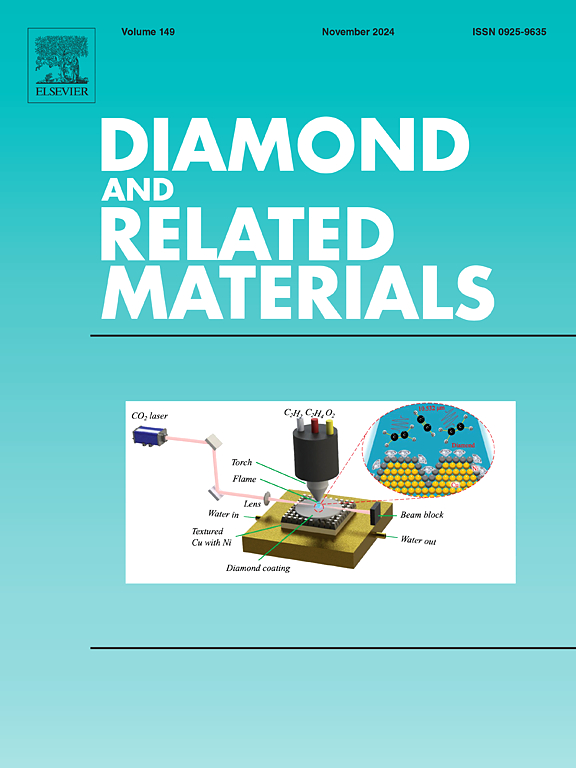氮化硼增强氧化铝陶瓷复合材料的合成与表征
IF 4.3
3区 材料科学
Q2 MATERIALS SCIENCE, COATINGS & FILMS
引用次数: 0
摘要
氧化铝基复合材料(Al2O3)具有优异的机械性能和电性能。氮化硼(BN)的掺入进一步增强了这些属性,使其适用于航空航天和汽车应用。这些复合材料在高温下机械强度的提高是一个关键属性。BN的加入显著提高了氧化铝陶瓷的耐热性,使其非常适合在极端条件下运行的发动机部件和切削工具。除了机械性能外,Al2O3-BN复合材料还具有优异的电绝缘体性能,BN增强了材料的导电性,使其成为高压和绝缘应用的首选。正在进行的研究强调了这些材料在未来技术进步中的潜力。实验研究表明,BN含量在0 ~ 1wt %之间变化会导致力学性能的变化。结果部分包含的实验应力-应变曲线支持了这些结果。这些复合材料通过液压机压实并在1600℃氩气气氛中烧结4小时,随着BN浓度的增加,密度从98.6%提高到99.3%。当BN的最佳含量为0.5 wt%时,材料的抗折强度达到424 MPa(提高3.41%),抗断裂强度达到6.3 MPa·m1/2(提高34.04%)。此外,Al2O3-BN复合材料表现出令人印象深刻的耐磨性和减少摩擦。当BN含量为0.25 wt%时,磨损率降低,摩擦系数(COF)在室温下降低46.11%,在高温下降低61.30%。为了保持这些优势,将BN含量保持在0.5 wt%以下至关重要,以确保高性能应用的机械,热学和摩擦学性能的最佳平衡。本文章由计算机程序翻译,如有差异,请以英文原文为准。

Synthesis and characterization of boron nitride reinforced alumina ceramic composites
Alumina-based composites (Al2O3) exhibit excellent mechanical and electrical properties. Incorporation of boron nitride (BN) further enhances these attributes, making them suitable for aerospace and automotive applications. The improved mechanical strength of these composites at high temperatures is a key attribute. The addition of BN significantly improves the heat resistance of alumina ceramics, making them well-suited for engine components and cutting tools that operate under extreme conditions. Beyond their mechanical benefits, Al2O3-BN composites excel as electrical insulators, with BN enhancing the material's resistance to electrical conductivity, making them a preferred choice for high-voltage and insulation applications. Ongoing research underscores the potential of these materials in future technological advancements. Experimental investigations show that varying BN content between 0 and 1 wt% results in mechanical property changes. These are supported by experimental stress-strain curves included in the results section. These composites, compacted via hydraulic pressing and sintered in an argon atmosphere at 1600 °C for 4 h, exhibit density improvements from 98.6 % to 99.3 % as BN concentration increases. The optimal BN content of 0.5 wt% yields peak performance, achieving a flexural strength of 424 MPa (an improvement of 3.41 %) and fracture resistance of 6.3 MPa·m1/2 (a 34.04 % enhancement). Additionally, Al2O3-BN composites demonstrate impressive wear resistance and reduced friction. A BN content of 0.25 wt% lowers wear rates and reduces the coefficient of friction (COF) by 46.11 % at room temperature and 61.30 % at elevated temperatures. To maintain these advantages, it is crucial to keep the BN content below 0.5 wt%, ensuring the optimal balance of mechanical, thermal, and tribological properties for high-performance applications.
求助全文
通过发布文献求助,成功后即可免费获取论文全文。
去求助
来源期刊

Diamond and Related Materials
工程技术-材料科学:综合
CiteScore
6.00
自引率
14.60%
发文量
702
审稿时长
2.1 months
期刊介绍:
DRM is a leading international journal that publishes new fundamental and applied research on all forms of diamond, the integration of diamond with other advanced materials and development of technologies exploiting diamond. The synthesis, characterization and processing of single crystal diamond, polycrystalline films, nanodiamond powders and heterostructures with other advanced materials are encouraged topics for technical and review articles. In addition to diamond, the journal publishes manuscripts on the synthesis, characterization and application of other related materials including diamond-like carbons, carbon nanotubes, graphene, and boron and carbon nitrides. Articles are sought on the chemical functionalization of diamond and related materials as well as their use in electrochemistry, energy storage and conversion, chemical and biological sensing, imaging, thermal management, photonic and quantum applications, electron emission and electronic devices.
The International Conference on Diamond and Carbon Materials has evolved into the largest and most well attended forum in the field of diamond, providing a forum to showcase the latest results in the science and technology of diamond and other carbon materials such as carbon nanotubes, graphene, and diamond-like carbon. Run annually in association with Diamond and Related Materials the conference provides junior and established researchers the opportunity to exchange the latest results ranging from fundamental physical and chemical concepts to applied research focusing on the next generation carbon-based devices.
 求助内容:
求助内容: 应助结果提醒方式:
应助结果提醒方式:


